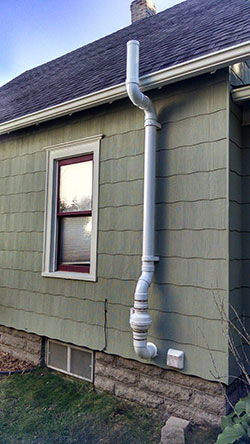What is radon gas? Is it harmful?
Is radon really bad for you?
Breathing radon over time increases your risk of lung cancer. Radon is the second leading cause of lung cancer in the United States. Nationally, the EPA estimates that about 21,000 people die each year from radon-related lung cancer. Only smoking causes more lung cancer deaths.
Children that are home all day go to a lot more danger for inhalation. Discover why radon threatens and why it's so hard to spot without screening. The research seems the death knell of the linear, no threshold theory, while unlocking to the concept of hormesis-- the principle that reduced levels of ionizing radiation may actually be good for you.
The EPA sets the degree of risky radon gas exposure at or over 4 pCi/L. If your residence has actually radon gas degrees surpassing this action degree, it's advised that you go through mitigation efforts to reduce exposure. You'll certainly need reduction and also may require more comprehensive renovations to secure off the resource of the gas if testing reveals a much higher degree.
Is radon mitigation really necessary?
When radon gas enters the body, it exposes the lungs to small amounts of radiation. In small quantities, experts say this is harmless. However, in persistent exposures or larger quantities, radon can damage the cells of the lining of the lungs, increasing a person's chance of developing lung cancer.
EPA forbade ground degree discharge of radon mainly because of the possibility for re-entrainment of the gas right into the house and also as a result of the opportunity of children being exposed to high radon degrees. The concentration of radon gas at the discharge point can be 10s of hundreds of picocuries per min.
- Radon gas is a naturally-occurring byproduct of the radioactive decay of Uranium in the soil.
- Relying on your geographic area, the radon levels of the air you breathe outside of your house might be as high as 0.75 pCi/L.
- The national average of outdoors radon levels is 0.4 pCi/L and also it is approximated by the National Academy of Sciences that exterior radon degrees create around 800 of the 21,000 radon caused lung cancer cells fatalities in the United States yearly.
- The US EPA has placed it clearly, stating, "Any radon direct exposure has some danger of creating lung cancer cells.
How do you eliminate radon?
Possible symptoms include shortness of breath (difficulty breathing), a new or worsening cough, pain or tightness in the chest, hoarseness, or trouble swallowing. If you smoke and you know you've been exposed to high levels of radon, it's very important to quit smoking.
The EPA advises doing a 2nd test to validate the initial searchings for if the examination results indicate radon levels at or over 4 pCi/L (picocuries per litre). Homeowners can take actions to lower the radon concentration if the average of the 2 temporary radon tests is 4 pCi/L or greater. The EPA keeps in mind that given that there is no safe degree of radon gas direct exposure, decreasing radon to below 2 pCi/L also helps reduce the number of radon-related lung cancers cells. Take a breath enough radon over the years, and also it can increase your danger of lung cancer cells.
What to Understand about the Threats of Radon Gas in Your Home
Believing you stay http://ofeithh0gq.nation2.com/what-realtors-required-to-understand-about-radon-e in an area not impacted by radon is simply one of the misconceptions about this harmful gas. We examined all content pertaining to radon on state federal government Internet site utilizing a standard data collection type.
How long does it take for radon to cause cancer?

Fact: You will reduce your risk of lung cancer when you reduce radon levels, even if you've lived with an elevated radon level for a long time. Keep in mind that radon levels below 4 pCi/L still pose some risk and that radon levels can be reduced to 2 pCi/L or below in most homes.